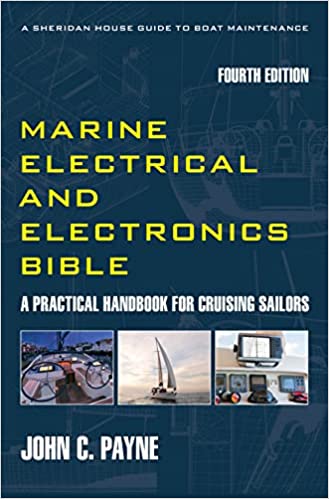What is a Marine Battery
What is a marine battery. To start with it is necessary to revisit a few battery basics. The fundamental theory of the battery is that a voltage is generated between two electrodes of dissimilar metal when they are immersed in an electrolyte.
In the typical lead acid battery or flooded cell battery the generated voltage is nominally 2.1 volts per cell. The typical 12-volt battery consists of 6 cells, which are internally connected in series to make up the battery. Each cell consists of the Positive plates, which are made from Lead Dioxide (PbO2), the Negative plates which are made from Sponge Lead (Pb), and they are immersed in the electrolyte made of Sulfuric Acid (H2SO4).
What is a Marine Battery
Current flow and discharging of the battery will occur when an external load is connected across the positive and negative terminals, and a electrochemical reaction takes place between the two plate materials and the electrolyte.
During this discharge reaction, the plates interact with the electrolyte to form lead sulfate and water, which dilutes the electrolyte, reducing the electrolyte density. As both plates become similar in composition, the cell loses the ability to generate a voltage. Re-charging of a cell reverses this reaction and the water decomposes to release hydrogen and oxygen, with the two plate materials being reconstituted to the original material.
When the plates are fully restored, and the electrolyte is returned to the nominal density the battery is completely recharged.
Recommended densities are normally obtainable from battery manufacturers and can vary a little between batteries. In warm tropical locations it is common for batteries to have a reduced electrolyte density, which does not cause separator and grid deterioration as fast as temperate climate density electrolytes.
De-ionized, demineralized and distilled water is the preferred for topping up cells however many use rainwater or straight out of the marina water faucet, which introduces impurities and degrades the plates.
What is a Marine Battery
This often misused sales term applies to certain
constructional features. Plates may be thicker than normal or there may be more
of them. Internal plate supports are also used for vibration absorption. Cases
may be manufactured with a resilient rubber compound and have carry handles
fitted. Filling caps may be of an anti-spill design. These days, batteries are
of a similar design, with very little left to distinguish marine batteries from the
automotive types except the label. In many cases you are paying a premium for a
label, but that's my opinion. For more practical advice and information go to the Marine Electrical and Electronics Bible.
What is a Marine Battery and Sulfation
Sulfation is the single greatest cause of flooded cell battery failure and the causes are relatively simple. One thing the person selling a boat to you can't or will not tell you are the true facts about installed boat batteries or the actual condition of the lead acid battery. When buying a boat always assume the batteries will need replacement.
During discharge, the chemical reaction causes both plates to convert to lead sulfate, and if recharging is not carried out promptly the lead sulfate starts to harden and crystallize. This is characterized by the formation of white crystals on the typically brown plates and is almost non- reversible. The immediate effect of sulfation is partial and permanent loss of capacity as the quantity of active material is reduced. Electrolyte density also partially decreases, as the chemical reaction during charging cannot be fully reversed.
This sulfated material also introduces higher resistances within the cell and inhibits charging, and as the level of sulfated material increases, the cell's ability to retain a charge is reduced and the battery ultimately fails. The deep cycle battery has unfairly gained a bad reputation for sulfation, however the battery is not the cause, improper and incomplete charging is the real cause.
Marine Battery Equalizing
The process of regular equalizing charging of a lead-acid-battery assists in reducing sulfation, and there are a few battery additives that also claim to reduce or reverse the effects. The other principal cause of failure is lack of maintenance, and a failure to monitor cell electrolyte levels and top them up with distilled water.
If you are buying a power or sail boat from a sailing boat-trader, fishing boat-trader or power boat-trader or seller in most cases you will have battery failure within the first 12 months as they are never maintained properly.
The charge and discharge cycle releases water, along with natural evaporation due to ambient air temperatures, and the exposed plates are seriously damaged leading to premature failure. The deep cycle battery does not tolerate inactivity and batteries left without charging have very high self discharge rates of up to 6% a month, and on many boats which sit on a mooring or in a slip unattended for long periods, the effects are serious.
The curse of buying a boat from a sailing boat broker, power boat trader or dealer is that the boat has had minimal maintenance and the battery is the first victim so plan on renewal in the first weeks. The first thing the boat broker then does is then apply overcharge with a battery charger.
Marine Battery Installation
Installation factors have a high level of importance for flooded cell batteries. Flooded cell batteries generate potentially hazardous hydrogen gas so they must be well ventilated. They also can leak acid in knockdowns and capsizes generating chlorine gas when acid mixes with salty bilge water creating new hazards. The marine batteries journey always starts with a standard lead acid boat battery.
